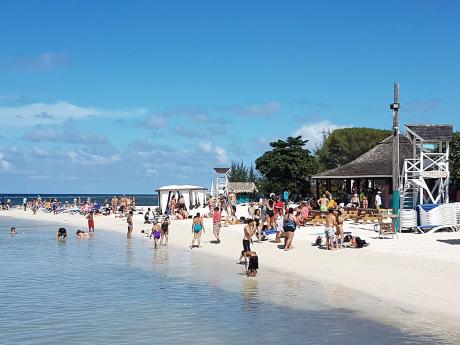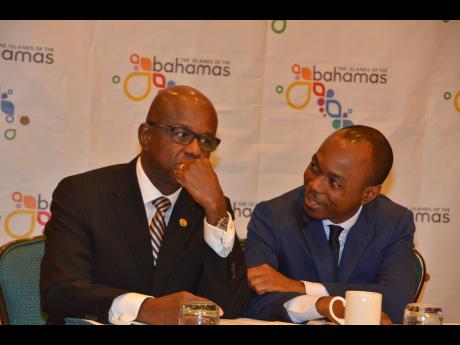Mixed bag for Caribbean tourism
Nassau, Bahamas:
With marked reduction from its main source market, the United States, and only a marginal increase out of Europe, tourist arrivals into the region in the last six months has been a mixed bag.
Indications are that international arrivals reached a total of 15.4 million, which was 1.2 million fewer than the same period last year as some of the region's tourism-dependent countries recover from the impact of two major hurricanes in 2017.
"It has been a tale of two situations. On the one hand, we have robust growth in countries that were not affected by last year's hurricanes. On the other, we have seen dramatic decreases in arrivals to those hit by the storms although the performances of these countries are steadily improving," Hugh Riley, secretary general of the Caribbean Tourism Organisation, told journalists at the State of the Tourism Industry Conference at the Atlantis, Paradise Island, on Friday morning.
Reports from 22 Caribbean destinations show 13 of them registering increases in tourist arrivals ranging from 1.7 per cent to 18.3 per cent during the first half of the year while s
even recorded decreases of a marginal 0.3 per cent to a high of 71 per cent.
The top-performing destinations during this period were Guyana at 18.3 per cent, Belize at 17.1 per cent, the Cayman Islands at 15.9 per cent, Grenada at 10.7 per cent, and The Bahamas at 10.2 per cent Riley said at the briefing.
He said that these individual results substantiate the regional messaging about the openness of the destinations for business and the confidence in destinations to deliver quality experiences.
In fact, the performances of the key source markets varied considerably, with some destinations recording strong growth while others registered declines.
In the US market, for example, Jamaica reported growth of 8.4 per cent; the Dominican Republic was up by 6.3 per cent; and 11 other destinations achieved growth, six of which were by double digits.
But the Caribbean received seven million visits from the US during the first half of the year, the report noted.
"This was a 15.8 per cent decrease when compared to the corresponding period last year due mainly to a 54.6 per cent fall in arrivals to Puerto Rico and decreases in arrivals to Cuba," Riley qualified.
TRAVEL RESTRICTIONS
It is estimated that the renewed travel restrictions imposed by the American government on its residents wanting to travel to Cuba also affected that country's overall outcome negatively.
On the other hand, there was a new record in arrivals from Canada, with 2.4 million overnight international tourists, representing a 4.7 per cent increase.
"Arrivals from Europe also increased, though marginally at 0.3 per cent, with three million tourists visiting the Caribbean during the first half of the year," said the secretary general.
Belize led the way with 24.3 per cent growth, followed by Guyana at 9.4 per cent, CuraÁao 6.2 per cent, and St Lucia at 4.5 per cent. However, overall growth was affected by steep falls in arrivals to Anguilla, Puerto Rico, and Bermuda.
Both Anguilla and Puerto Rico were damaged badly by Hurricanes Maria and Irma.
In relation to cruise shipping, there was also a marginal decline of 0.5 per cent, "although there are signs of improvement," Riley noted.
Of the 23 reporting cruise destinations, 15 realised improvement upon their 2017 performances, with Trinidad & Tobago registering increases of 166 per cent; St Vincent & the Grenadines up by 84 per cent; and Martinique at 54.7 per cent, leading on growth rates.
However, this was countered by declines of nearly 90 per cent in the British Virgin Islands, Dominica was down by 88.4 per cent, St Maarten down 27.5 per cent, and the US Virgin Islands decreased by 22.5 per cent. Puerto Rico, though hurricane-impacted, posted a 1.1 per cent increase during the period.
Riley said they the destinations most affected by the decline were rebuilding, unveiling new tourism products and services daily.
The anticipated decline in land-based visitors to the region is expected to fall within three and four per cent this year, but predictions are for a 4.3 per cent increase next year.
Cruise, on the other hand, is projected to grow by five per cent to six per cent this year.


